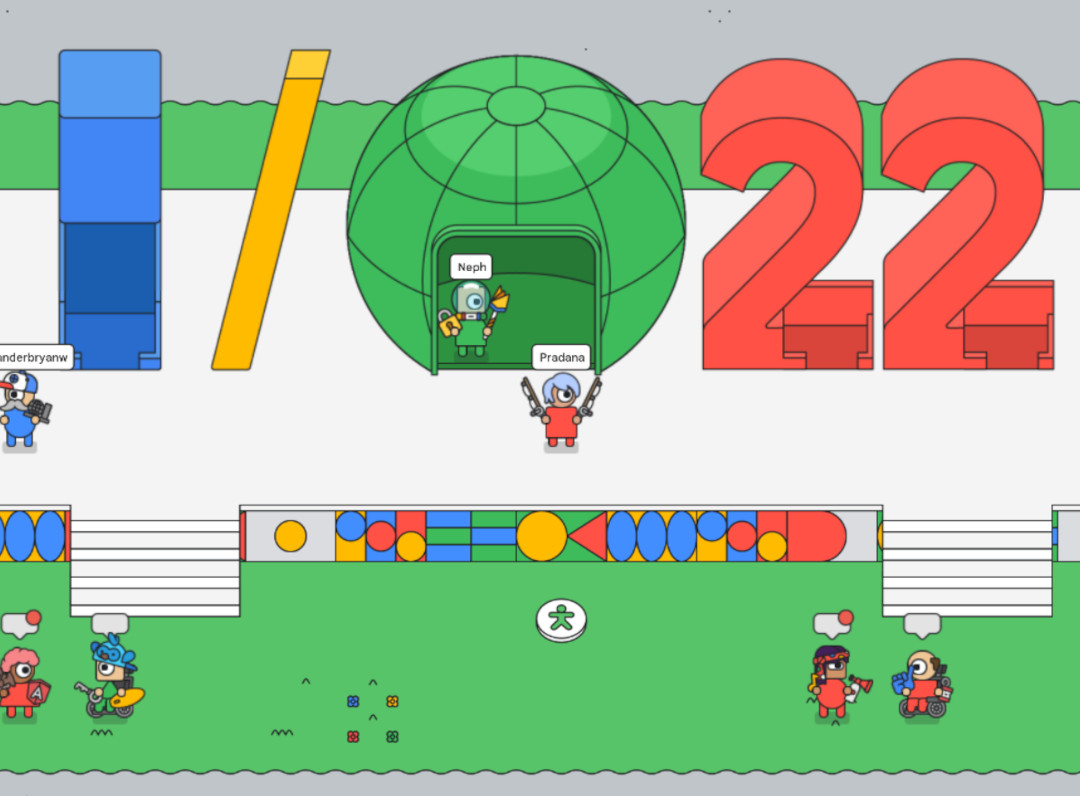Makerlog #11 - Google IO 2022

Last week was Google IO 2022. Why I couldn’t join in person, I spend two of my evenings in the awesome virtual Google IO Adventure Game. Here are some of my highlights and takeaways.
Google IO Adventure
First of all, the Google IO Adventure game was a great way to explore a conference digitally. I/O Adventure is a 2D game world where you can walk around, discover new google products and try them in a code lab and discover virtual swag and easter eggs.
Most of the time, when a digital conference takes place, I just select a number of talks I want to follow based on the titles and descriptions and watch those. The Adventure game “forced” me to explore all the different product islands if I wanted to get an achievement, this felt a lot like walking through an event hall and walking past all the product booths in a real-world conference. While I didn’t participate much in the social aspect, I really enjoyed taking some of the code labs at my own pace.

Cloud
Google Cloud had a good keynote that I’d definitely recommend “The cloud built for developers”.
One of the themes I noticed through all the talks was that they are democratizing artificial intelligence. By focusing on making AI models more efficient so that they can run on mobile and websites. And providing the right machine learning tools and products so that you don’t even have to know a lot about AI anymore to incorporate it into your apps.
Another big announcement they made was the extension of Google Cloud Run with Cloud Run Jobs. Cloud Run is Google Cloud’s Serverless platform. Meaning it’s managed by Google and you only pay for what you use during execution. For now, it was mainly focused on “short” running tasks triggered by requests with a default limit of 5 minutes that could be extended up to 60 minutes. With Cloud Run Jobs it is now possible to run long-running jobs like generating reports on Cloud Run.
My personal highlight from the Cloud updates was AlloyDB. AlloyDB is a fully managed PostgreSQL-compatible database service. You could already run PostgreSQL on Google Cloud in their Cloud SQL product. But lately, I am spending a lot of time increasing the performance of geo-spatial queries and it’s becoming a bit of a pain. AlloyDB promises to fix this issue with an AI-optimized columnar engine for an impressive boost to query performance. AlloyDB would also take away some of the maintenance work like increasing disk allocation and vacuuming.
Firebase
Currently, my favourite web stack is NextJS with a Firebase backend. So I was looking forwards to the Firebase updates, and they didn’t disappoint.
First of all Firebase Hosting will now support NextJS hosting out of the box. (Along with angular). This means I’m no longer limited to Vercel when I want to use the SSR functionality. I’d still have to check if Cloud Functions will automatically be created like they are with Vercel and how pricing compares.
Something that apparently already existed for a year but I only just discovered, is Firebase Extensions. Firebase Extensions allow you to quickly add popular APIs like Stripe and Algolia without much work to your Firebase app. In the new update, they have added even more extensions and now allow you to write custom code for that extension. Making it even faster to develop applications.
Firebase has also improved the developer experience. It is now possible to add performance monitoring alerts to your app so you know when things are going wrong within your app. They are also integrating Google Play Store more. First of all, with Crashlytics, you now can find and fix issues faster within your app. But also with App Check Security which allows you to improve your App Security by verifying that only your app calls your backend.
Flutter
Talking about apps. Flutter is also growing at a steady pace. Flutter allows you to create one codebase and deploy it to app, web and desktop. Flutter introduced Flutter 3 with stable support for macOS and Linux apps. While I haven’t used Flutter in the past except for Google IO’s Codelab. It is definitely on my radar.
Another update I got excited about was that Flutter is being connected more to the Cloud Ecosystem. With the release of FireFlutter, it is now easier to connect Flutter to Firebase so I can still use my familiar tools while developing apps.
Ethics & Accessibility
Another thing that caught my eye was the focus on ethics and accessibility. In the machine learning track, there were a few talks focused on responsible AI review processes and how to apply responsible AI principles in datasets.
There was even a whole track (or island in I/O Adventure) dedicated to accessibility. I was really amazed by all the progress in this track. I must confess that it’s easy to overlook how other people experience the web. For example, how screen readers interpret websites or how colours and contrasts have an effect on how people experience your website. As a developer, these things are often an afterthought or not even a thought at all. By including accessibility by default or making it easier to implement these features and making the web more inclusive.
These were my personal highlights of Google I/O but I only scratched the tip of the iceberg. During the keynote Google teased some new hardware coming to the market. And also showed an impressive demo for a new Google Glass-like device that could live subtitle real-world conversations. There were also more islands to explore in I/O adventure each with there own updates. Like Android, ARCore and ChromeOS. I definitely recommend to check out their program at https://io.google/2022/program/